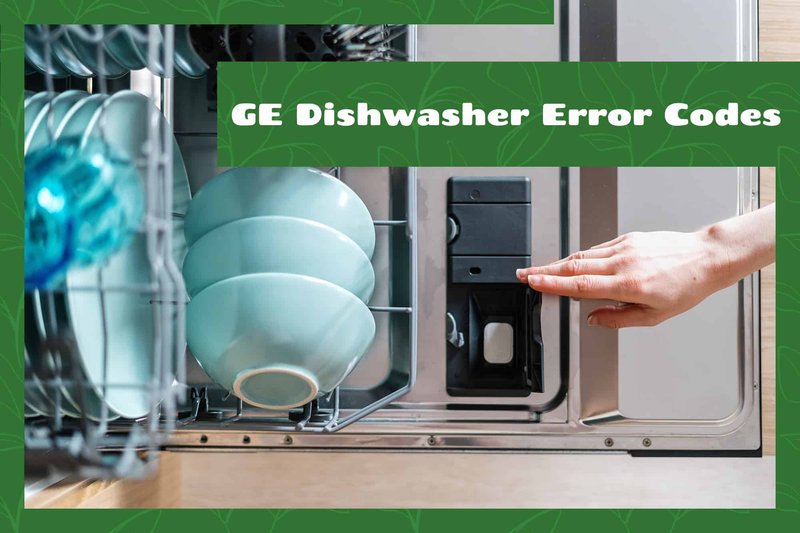
Picture this: You load your dishwasher, expecting it to take care of the mess, only to notice it flashing an error code. F1 might sound like something out of a spy movie, but it’s really just a way your dishwasher is trying to communicate. It’s sort of like a car’s check engine light, signaling that there’s something amiss needing your attention. Before you panic, it’s essential to grasp what this code means and whether it’s safe to continue using your dishwasher when it pops up.
Understanding Error Code F1
So, what in the world does Error Code F1 mean on your GE dishwasher? This code typically points to a float switch issue. Imagine a float switch as a tiny lifeguard inside your appliance, always on the lookout for excess water. Its job is to ensure that the water level inside the dishwasher doesn’t exceed what’s safe. When this little guy detects something unusual, like too much water or a malfunction in sensing, it tells the dishwasher to halt operations, resulting in the F1 code.
Now, you might be thinking, “How does a float switch get confused?” Well, just like how your sink might clog, the float switch can be tricked by debris or grime, preventing it from moving as it should. Alternatively, there could be an issue with the wiring or the switch itself might be out of order. While this sounds technical, in most cases, it’s fixable with a bit of troubleshooting.
Before you whip out the toolbox or make a call to the repair service, it can be helpful to inspect the area around the float switch. Look for any visible obstructions or gunk that could be the culprit. Often, a simple clean-out or a reset can do wonders. Don’t forget, though, when in doubt, it might be best to consult a professional.
Is It Safe to Continue Using the Dishwasher?
Here’s the deal: while the error code might not spell immediate disaster, it’s generally not advisable to keep running the dishwasher with the F1 code showing. The dishwasher is sounding an alarm for a reason, and ignoring it might lead to bigger, more expensive problems down the line. Think of it as your dishwasher’s way of saying, “Hey, I need a little help here!”
Continuing to use the dishwasher without addressing the error could result in water damage, not only to the machine but potentially to your kitchen as well. Water can sneak its way into electronics or seep out, creating an opportunity for mold or mildew. No one wants a swampy kitchen floor or a journey into mold mitigation.
So, what’s the next step? Try resetting the dishwasher first. Unplug it or switch off the breaker to allow the system to reboot. If the error persists, it’s probably time for a bit more investigation or to call in the pros. Remember, your safety and the lifespan of your appliance are worth the wait and effort.
Steps to Troubleshoot Error Code F1
Let’s get hands-on! Troubleshooting might seem daunting, but it’s often a straightforward process. First, unplug your dishwasher or turn off the circuit breaker. This isn’t just about safety; it’s a bit like allowing your computer to reboot when it’s acting up. Give it a minute or two before turning it back on to see if the code clears.
If the error remains, take a look inside. Locate the float switch (usually a small, round device at the bottom of the tub). Check to see if it’s stuck or obstructed, gently moving it up and down. Is it feeling a bit stiff or clogged with mineral deposits? Give it a careful clean with a bit of vinegar or a gentle brush.
If cleaning doesn’t resolve the issue, consider inspecting the wiring if you feel comfortable. Wires can sometimes come loose or get damaged over time. However, unless you’re confident in your electrical troubleshooting skills, this might be best left to a technician. There’s no shame in calling in reinforcements!
Preventative Tips to Avoid Future Errors
Prevention is better than cure, right? Keeping your dishwasher happy and healthy requires a bit of TLC. Regularly cleaning the interior and especially the area around the float switch can prevent future blockages. Think of it as giving your dishwasher a spa day every now and then to keep it running smoothly.
Hard water can be a silent troublemaker, leaving deposits that might mess with your float switch over time. Consider using a water softener or dishwasher cleaner specifically designed to combat this issue. It’s a small step that can make a big difference in the long run.
Lastly, using the right detergent and not overloading your dishwasher can also help maintain optimal performance. It’s a little like packing a suitcase; if you stuff it too full, something’s bound to get wrinkled or not work quite right. So, follow the manufacturer’s guidelines for loads and detergents to keep things on track.
In conclusion, while the F1 error might seem intimidating, understanding and addressing it can be a manageable task. With a bit of patience and upkeep, you can ensure your GE dishwasher keeps running smoothly without any hiccups.